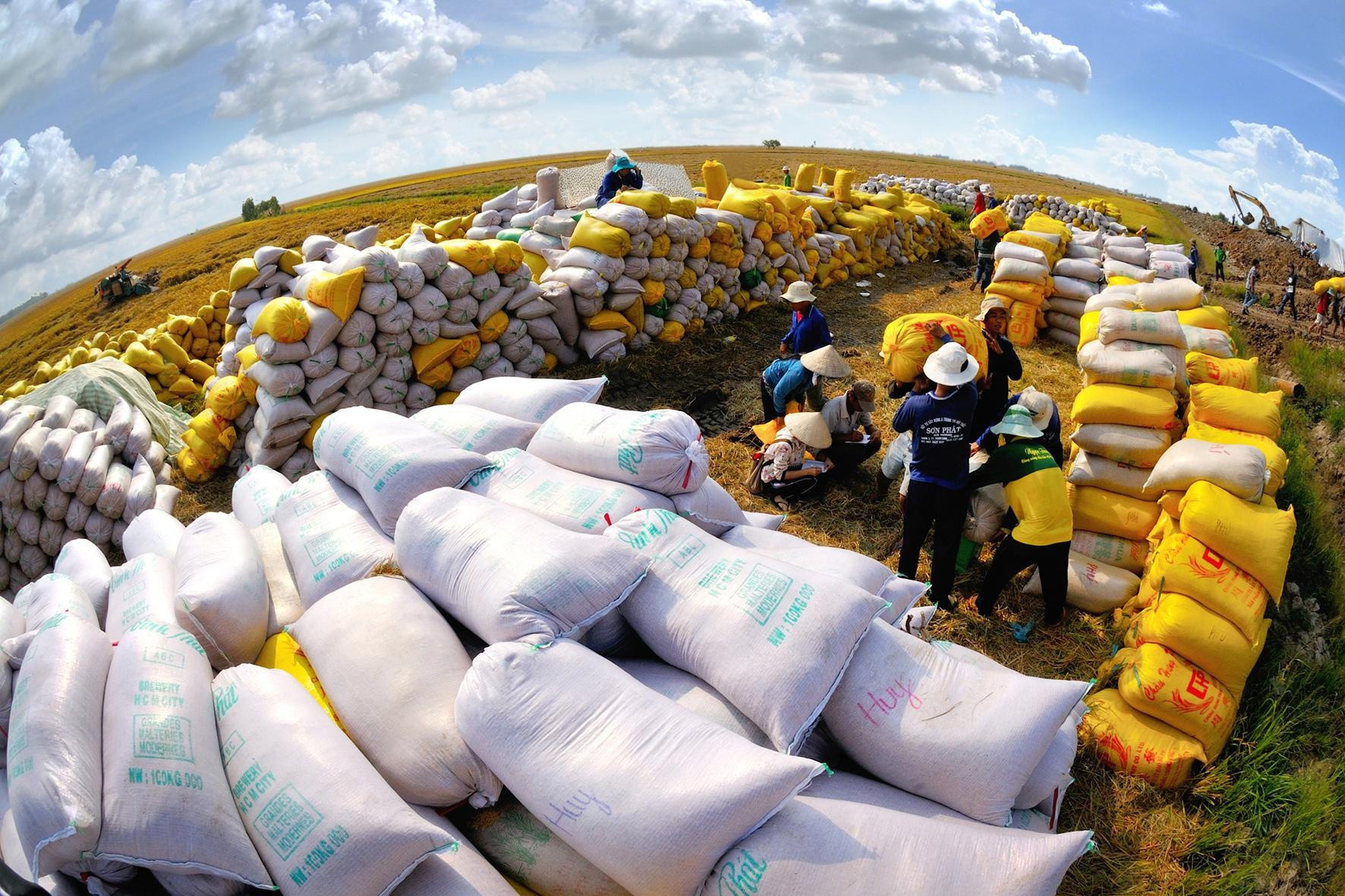
The global market is witnessing ‘rice fever’ with prices escalating day by day after India and several other countries imposed export bans to ensure domestic food security.
A number of Vietnamese rice export companies have suffered from the price escalation. Nguyen Luu Truong, director of Gao Ngon Nhat Co Ltd in HCM City, said many companies could not anticipate the price increases, so they are incurring big losses as they have had to collect rice from farmer at high prices, and had earlier signed export contracts with foreign partners at lower prices.
Tuong said his company receives numerous calls from foreign rice importers who want to place orders. However, Tuong has to consider the situation carefully, because the prices may fluctuate quickly.
The director said his company and foreign partners agreed on a flexible provision which says that selling prices will be adjusted in accordance with the market price performance.
This means that if the market price increases too sharply, the foreign partners will have to accept higher prices. And Tuong will lower the selling price if the domestic price decreases.
“I know many companies ‘turned a blind eye’ to sign export contracts and now suffer from price escalations. They have had to accept losses and cannot shout to the government for help, because this is the market,” he said.
Regarding the recent statement by the Ministry of Agriculture and Rural Development (MARD) to the Prime Minister, proposing an instruction on boosting rice exports, Dinh Quang Thanh from Phuong Nam Food JSC, representative of Gao Ong Cua ST25 in HCM City, said if the rice output is abundant, exports should be increased. It is now the time to export rice as high export prices will benefit farmers and exporters.
Thanh said he has received news that the rice price in Mekong Delta has moved up.
The director of Gao Ngon Nhat also thinks that Vietnam needs to boost rice exports immediately.
The director of the Department of Crop Production Nguyen Nhu Cuong said in 2022, the paddy output of Vietnam reached 42 million tons, and Vietnam exported 7.13 million tons or rice. In 2023, Vietnam plans to produce 43 million tons of paddy, and rice exports may exceed the 2022 record.
Phan Minh Hoa, MA, a lecturer at RMIT University, believes that in the short term, rice prices will continue staying high in the second half of the year.
She cited a report from the General Department of Customs (GDC) as saying that in the first six months of 2023, the average export price was $539 per ton, up 10 percent over the same period last year.
Vietnam’s 5 percent broken rice was traded at $588 per ton, now at a peak since 2011. This is the golden chance for Vietnam, the third largest exporter, to increase exports and expand markets.
Hoa said, as the rice crop season is short, the rice price increase cycle won’t last a long time. Once the rice growing area decreases, Vietnam should focus on improving rice quality and build strong brands to satisfy increasingly high requirements from customers.
Former Deputy Minister of Industry and Trade Tran Quoc Khanh said Vietnam has short-term benefit from India’s rice export ban. The current situation has allowed Vietnamese farmers to get the best profits.
However, Khanh warned that Vietnamese farmers and exporters should not be too optimistic. This should not be considered a long-term opportunity. It is just a short-term phenomenon.
When weather conditions turn normal again, export countries will increase rice exports again. Particularly, if India removes the rice export ban, the rice market will return to the right track.
According to the Vietnam Food Association (VFA), on August 1, 5 percent broken rice was traded at $588 per ton, up $20 per ton over July 31, and $55 compared with July 20, when India’s ban was released.
Tran Chung